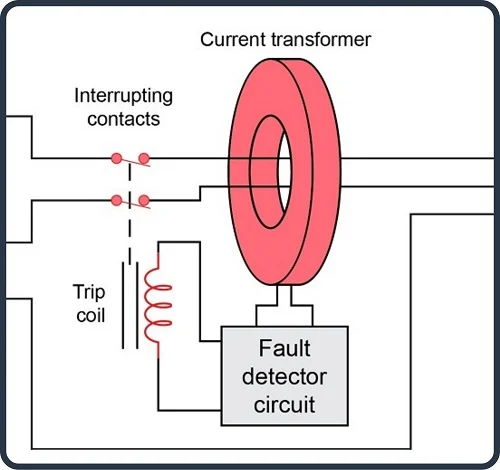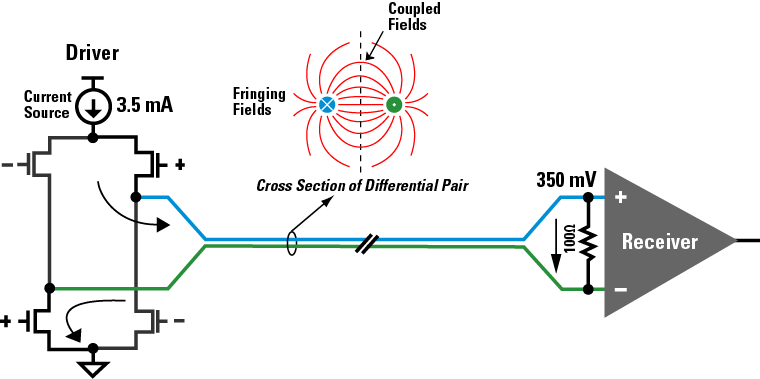Hall Effect sensors are integral components in modern automotive systems, serving diverse functions such as engine management, ABS braking systems, and transmission control. These sensors detect changes in magnetic fields and convert them into electrical signals, which are crucial for the proper functioning of these systems. However, like any electronic component, Hall Effect sensors are susceptible to issues that can hinder their performance. In this comprehensive guide, we will delve deeper into common problems with Hall Effect sensors and provide detailed steps for troubleshooting and diagnosis.
Common Hall Effect Sensor Issues:
No Signal Output:
Symptoms: The absence of any signal output potentially causing erratic engine behavior or even complete failure of interconnected systems. To troubleshoot and address this problem, it’s essential to consider various factors that could contribute to the absence of signal output.

Broken or Disconnected Wires: Inspect the entire wiring harness meticulously for any signs of wear, breaks, or loose connections. Wiring issues can occur due to physical damage, exposure to harsh environmental conditions, or poor initial installation. Pay close attention to connectors, joints, and any areas where the wiring is exposed. Additionally, check for corrosion, as this can impede the flow of electrical signals.
Faulty Power Supply: A consistent and proper power supply is crucial for sensor functionality. Verify the power supply to the sensor to ensure it meets the required voltage specifications. Fluctuations or irregularities in voltage can lead to signal disruptions. Consider using a multimeter to measure the voltage at the sensor and compare it against the recommended values provided by the manufacturer.
Internal Sensor Failure: Internal components within the sensor may degrade over time due to factors like prolonged use, manufacturing defects, or exposure to extreme conditions. If all external factors check out, consider the possibility of internal sensor failure. Unfortunately, internal issues may require advanced diagnostic tools or the replacement of the sensor itself. Consult the manufacturer’s documentation for guidance on testing internal components or consider seeking professional assistance.
Grounding Issues: In addition to power supply, proper grounding is equally important. Ensure that the sensor is adequately grounded to the vehicle’s chassis or another designated grounding point. Poor grounding can introduce electrical noise and affect the stability of the signal output. Clean the grounding points and verify that they establish a secure electrical connection.
Environmental Factors: Evaluate the operating environment for the sensor. Extreme temperatures, humidity, or exposure to contaminants can adversely affect sensor performance over time. If the sensor is not adequately sealed or protected, it may be susceptible to environmental damage. Consider installing additional protective measures, such as weatherproofing or shielding, if applicable.
Software or Calibration Issues: Sometimes, signal output problems can stem from software or calibration issues. Check for updates or patches provided by the sensor manufacturer. Additionally, ensure that the sensor is correctly calibrated according to the specifications outlined in the documentation. Incorrect calibration settings can result in inaccurate or absent signal output.
System Integration and Compatibility: Verify that the sensor is compatible with the overall system and that it integrates seamlessly with other components. Incompatibility issues can lead to communication breakdowns and signal output failures. Consult the system’s documentation and the sensor’s specifications to confirm compatibility.
Diagnostic Tools: Utilize diagnostic tools such as oscilloscopes, scan tools, or specific diagnostic software to analyze the sensor’s behavior and signal output in real-time. These tools can provide valuable insights into the health of the sensor and help pinpoint the source of the signal output problem.
Inconsistent Signal Output:
Symptoms
Inconsistent signal output in automotive sensors can manifest through various symptoms, leading to suboptimal engine performance and erratic system behavior. Understanding the underlying causes and addressing them is crucial for maintaining the proper functioning of vehicle systems.

Magnetic Interference
External magnetic fields can have a detrimental impact on sensor readings, leading to fluctuating or unstable signals. These fields may emanate from nearby electronic devices, power lines, or even the vehicle’s own electrical components. Shielding sensors or rerouting wiring to minimize exposure to magnetic fields can help mitigate this issue.
Possible Solutions:
Shielding Techniques: Implementing shielding materials around sensitive sensor components can protect them from external magnetic influences.
Wiring Routing: Re-route wiring away from potential sources of magnetic interference to minimize the impact on sensor signals.
Worn-out Components
Over time, internal components of sensors can wear out due to prolonged exposure to harsh operating conditions, temperature extremes, or simply the natural aging process. This wear and tear can result in signal inconsistencies and affect overall sensor performance.
Possible Solutions:
Regular Maintenance: Conduct regular inspections and replace sensors as part of routine maintenance to prevent deterioration of internal components.
Quality Replacement Parts: When replacing sensors, opt for high-quality components to ensure longevity and reliable performance.
Loose Connections
Loose or poor connections within the sensor circuit can lead to signal instability. Vibrations, temperature variations, or even improper installation can contribute to these connection issues.
Possible Solutions:
Thorough Inspection: Regularly inspect sensor connections for signs of wear, corrosion, or looseness.
Proper Installation: Ensure sensors are installed according to manufacturer specifications to prevent unnecessary strain on connections.
Environmental Factors
Extreme environmental conditions, such as excessive heat, cold, moisture, or contaminants, can adversely affect sensor performance. These factors may alter the electrical properties of the sensor components, leading to signal fluctuations.
Possible Solutions:
Environmental Sealing: Employ sensors with proper environmental sealing to protect internal components from moisture and contaminants.
Insulation: Install thermal insulation to shield sensors from extreme temperatures that could impact their accuracy.
Software or Calibration Issues
Incorrect sensor calibration or outdated software can also contribute to inconsistent signal output. This can be a result of software glitches, updates, or changes in vehicle operating parameters.
Possible Solutions:
Software Updates: Ensure that the vehicle’s software and sensor calibration are up to date.
Professional Calibration: Seek professional assistance for sensor calibration to ensure accuracy and compatibility with the vehicle’s system.
Faulty Signal Reading:
Symptoms: Incorrect sensor readings can result in inaccurate engine timing or misfire issues.

Incorrect Sensor Readings
Effects: Inaccurate sensor readings can disrupt engine timing, leading to poor fuel efficiency, increased emissions, and potential misfire problems.
Possible Causes:
Wiring Issues: Damaged or corroded wiring can interfere with the transmission of signals from the sensor to the engine control unit (ECU).
Faulty Sensor: A malfunctioning sensor, due to wear and tear or electrical issues, may provide inconsistent or incorrect readings.
Interference: Electronic interference from other vehicle components or external sources can disrupt the sensor’s signals.
Incorrect Air Gap
Effects: The air gap between the sensor and its target is critical for accurate readings. An improper gap can lead to signal distortion and timing errors.
Possible Causes:
Installation Errors: The sensor might not be correctly installed, causing deviations in the air gap.
Wear and Tear: Over time, components may degrade, leading to changes in the air gap.
Incorrect Parts: The use of incompatible sensor or target components can result in an incorrect air gap.
Contamination
Effects: Dirt, oil, or debris on the sensor’s surface can hinder its ability to generate accurate readings, impacting engine performance.
Possible Causes:
Environmental Exposure: The sensor may be exposed to harsh conditions, leading to the accumulation of contaminants.
Poor Sealing: Inadequate sealing around the sensor can allow foreign substances to reach its surface.
Lack of Maintenance: Regular sensor cleaning and maintenance are crucial for preventing contamination issues.
Misalignment
Effects: A misaligned sensor may not accurately capture signals from its target, resulting in timing discrepancies and potential engine misfires.
Possible Causes:
Installation Errors: Improper installation can lead to misalignment between the sensor and its target.
Component Shift: Vibrations or mechanical stress may cause the sensor or its mounting components to shift over time.
Accidental Damage: External factors such as collisions or impacts can cause misalignment issues.
Troubleshooting Steps:
Visual Inspection:
Check for Physical Damage: Inspect wires, connectors, and the sensor housing for any visible damage.
Mounting and Alignment: Ensure the sensor is securely mounted and correctly aligned with its target.
Surface Inspection: Look for signs of contamination on the sensor surface.
Resistance and Voltage Checks:
Multimeter Usage: Use a multimeter to measure the resistance of the sensor and verify the voltage supply.
Compare Readings: Compare the obtained readings with the manufacturer’s specifications for the sensor.
Air Gap Adjustment:
Measure and Adjust: Measure the air gap between the sensor and its target and make adjustments as per the manufacturer’s recommendations.
Magnetic Field Interference:
Identify Sources: Identify potential sources of magnetic interference in the vicinity of the sensor.
Shielding or Repositioning: Shield the sensor or consider repositioning it to minimize magnetic interference.
Signal Analysis:
Oscilloscope Usage: Utilize an oscilloscope to analyze the sensor signal waveform.
Compare Waveforms: Compare the observed waveform with the expected pattern provided by the sensor manufacturer.
Diagnosing Hall Effect Sensor Issues:
| Diagnostic Step | Description |
| Code Scanning | Use an OBD-II scanner to retrieve error codes related to the Hall Effect sensor. |
| Cross-reference obtained codes with the vehicle’s service manual for specific troubleshooting. | |
| Live Data Monitoring | Utilize live data monitoring tools to observe real-time sensor readings during vehicle operation. |
| Look for irregularities or sudden drops in sensor output that may indicate potential issues. | |
| Functional Testing | Perform system-specific tests tailored to the Hall Effect sensor. |
| Monitor the sensor’s response to different operating conditions to identify patterns or irregularities. | |
| Component Replacement | If troubleshooting fails, consider replacing the Hall Effect sensor with a new, reliable component. |
| Ensure that the replacement sensor meets specifications outlined by the vehicle manufacturer. |
Effectively troubleshooting and diagnosing Hall Effect sensor issues is critical for maintaining the optimal performance and reliability of automotive systems. Regular visual inspections, resistance and voltage checks, and in-depth diagnostic procedures using tools like OBD-II scanners and oscilloscopes are essential for identifying and addressing potential problems. By following these comprehensive steps, technicians and enthusiasts can ensure the longevity and efficiency of Hall Effect sensors, contributing to the overall health of the vehicle. Regular maintenance, proper installation practices, and timely troubleshooting are key to a well-functioning automotive system.
Reading more article about Why do Automotive Companies Use Hall Effect Sensors for Many of Their Applications?











